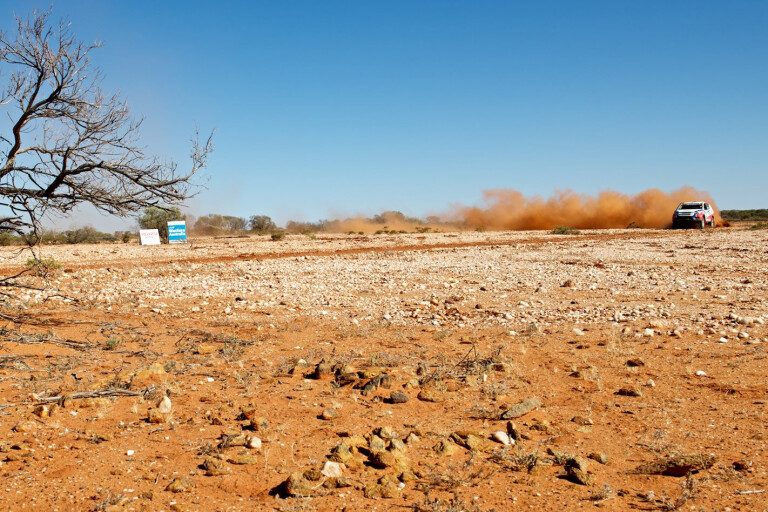
Known in its formative years as the Wynns Safari, the Australasian Safari has now spanned three decades and cemented itself as Australia’s most arduous offroad event; the Dakar Down Under if you like.
Event History
There’s nothing else that is as gruelling and tough on both man and machine, and it’s an event on the to-do list of many offroad drivers and riders.
The Safari has attracted some of the biggest names in Australian and International motorsport over the years, including leading touring car drivers and factory-backed Dakar competitors from Europe and Japan.
The late, great Peter Brock was quoted in Bob Carpenter and Peter Whitaker’s book, Safari – the story of Australia’s greatest offroad motoring adventure, as saying the event was a unique test of patience, mechanical sympathy and the art of improvisation.
“The Safari provides some of the most demanding, challenging and exhilarating driving that exists and the endurance aspects have to be experienced to be believed,” Brock said.
Jeep's 2014 Entrant
Entering a showroom standard 4x4 vehicle, driven by a magazine editor with no competitive racing experience, in such a challenging event might seem like a frivolous concept. Yet that’s just what Jeep Australia proposed when they asked us to join them on the 2014 Safari in Western Australia.
Jeep’s plan was to enter two of its new Rubicon X models of the JK Wrangler Unlimited in the Safari; one driven by your 4X4 Australia editor and the other by Matt Brogan from Carsales.com.au. The cars would be bog stock right down to tyres and shock absorbers, with only the compulsory safety equipment fitted.
The Vehicle
RUBICON X
While the Rubicon might be the most capable offroad model in the Wrangler range, its swag of offroad goodies probably weren’t what’s needed for a cross-country race like the Australasian Safari. The extra low gearing in both the transfer case and axles made low range redundant in these conditions, and likewise the front sway bar disconnect and front and rear locking diffs are more suited to low speed crawling than faster terrain challenges.
The Dana 44 axle under the front of the Rubicon was appreciated, however, as the Dana 30 is not as strong and may not have coped so well in the harsh conditions.
Jeep Australia wanted to keep the Rubicon X vehicles bone stock for this torture test, right down to standard shocks and tyres. We were impressed by the performance of the Goodyear Wrangler tyres even though they looked pretty well abused by the end of the week. Our car only had two slow leaks from pinholes probably caused by spinifex spikes, while the other Jeep did suffer some tyre sidewall damage.
The standard shocks didn’t fare so well and were pretty much junk halfway through each stage. You wouldn’t expect any OE shock to put up with this treatment and that’s why the competition vehicles have thousands of dollars spent on each corner of their suspension.
The only additions for the race were safety related: Sparco race buckets replaced the heated leather seats exclusive to the Rubicon X; five point harnesses held both driver and co-driver in the seats; while a custom made cargo barrier, incorporating a bar to secure the harnesses, was fitted where the rear seat would normally reside. The factory roll cage was deemed sufficient for the Safari Challenge class. Other additions included fire extinguishers, driver to co-driver intercom, Terra Trip and Rally Safe units and an UHF radio.
The limited edition Wrangler Rubicon X is available now for $52,000 with a V6 petrol and auto transmission the only powertrain offerings.
*See the full story and results in the January 2015 edition of 4x4 Australia Magazine.
See other 4x4 Australia road tests and first drives
For all the latest 4WD and off-roading news and reviews subscribe to our monthly magazine today.



COMMENTS